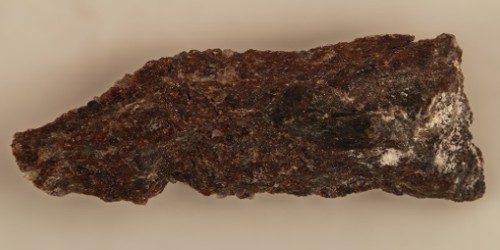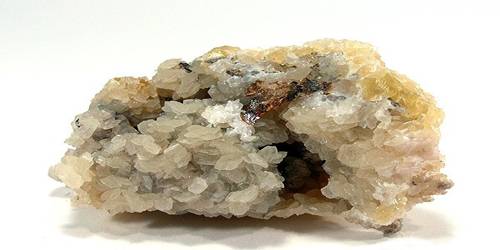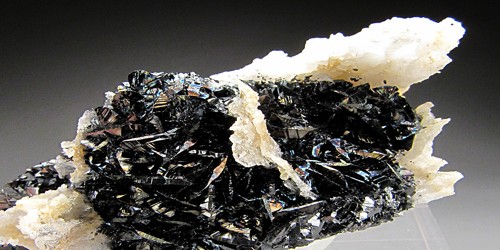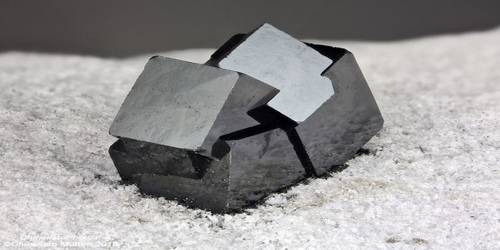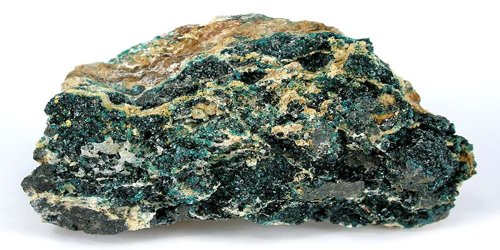Hazenite is a hydrous phosphate mineral with the chemical formula of KNaMg2(PO4)2·14H2O, therefore a hydrous alkali magnesium phosphate. It is a member of the struvite group. It was first described for an occurrence adjacent to Mono Lake, California, and named after Robert M. Hazen of the Carnegie Institute.
It was approved as a new mineral on February 28, 2008, by the Commission on New Minerals of the International Mineralogical Association.
General Information
- Category: Phosphate mineral (Struvite group)
- Formula: KNaMg2(PO4)214H2O
- Crystal system: Orthorhombic
- Crystal class: Dipyramidal (mmm)
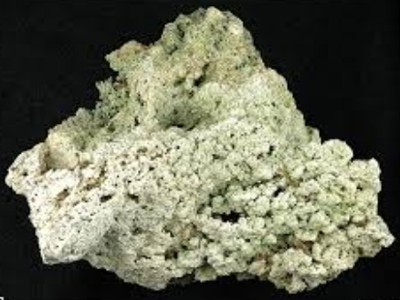
Fig: Hazenite – a hydrous phosphate mineral
Properties
- Formula mass: 276.331 g/mol
- Color: Colorless
- Crystal habit: Radiating elongated tabular or prismatic clusters or single bladed tabular crystals
- Tenacity: Brittle
- Mohs scale hardness: 2 – 2.5
- Luster: Vitreous
- Streak: White
- Diaphaneity: Transparent
- Specific gravity: 1.91
Occurrence
It occurs as crystal clusters associated with decomposed algae remnants on calcite or aragonite. It is precipitated by microbes in the highly-alkaline environment of Mono Lake.
Information Source:
